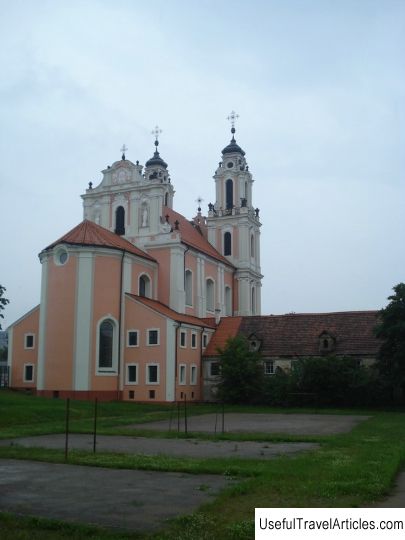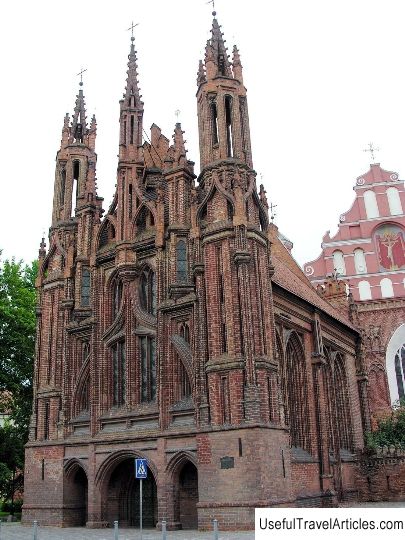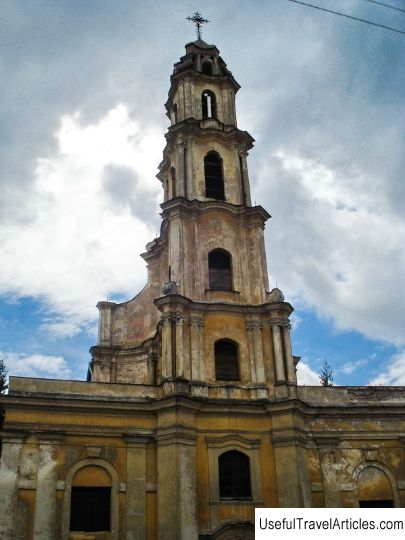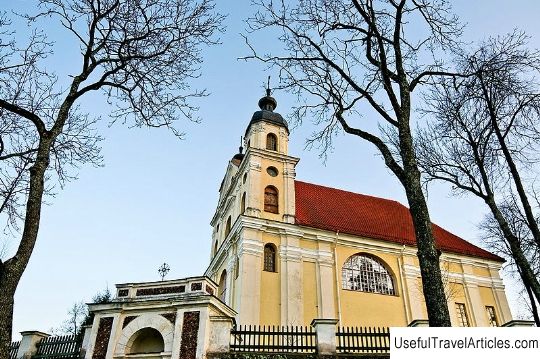Roman Catholic Church of St. Teresa (Sventos Tereses baznycia) description and photos - Lithuania: Vilnius
Rating: 7,7/10 (2039 votes) 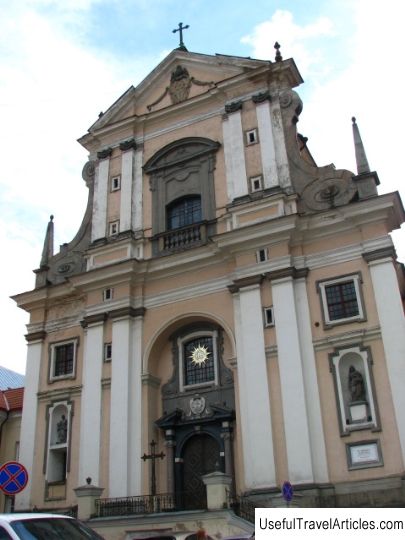
Roman Catholic Church of St. Teresa (Sventos Tereses baznycia) description and photos - Lithuania: Vilnius. Detailed information about the attraction. Description, photographs and a map showing the nearest significant objects. The name in English is Sventos Tereses baznycia. Photo and descriptionIn the southern part of the Old Town of Vilnius, there is an ancient monument of architecture in the early Baroque style, the parish Roman Catholic Church of St. Teresa. It is located near the Ostrobramnaya chapel and the only city gate that has survived in the city. In 1621 - 1627, the burgomaster Ignatius Dubovich and his brother Stephen built a wooden church in the monastery of the Discalced Carmelites. For several years from 1633 to 1654, near the Monastery of the Discalced Carmelites, a stone church was built on the site of a wooden church. For the construction of the church, the money was allocated by the Chancellor of Lithuania - Patsas, and the author of the project was Ulrich, who at one time built the Radvil Palace. The facade of the building was made of noble stone - marble, granite and sandstone. According to assumptions, the main facade of the church was designed by the Italian architect - Constantino Tencalla. Lithuanian Bishop Jurgis Tiskevicius consecrated a church in honor of St. Teresa in 1652. After the monastery was closed by the Russian authorities in 1844, the church was given into the possession of the Catholic clergy. The church burned several times in 1748 and 1749, the interior was especially badly damaged during a fire in 1760. During the restoration work, an arched vault was erected and a bell tower was built. The works were designed by Johann Glaubitz. In 1783, at the expense of the Rogachev elder Michal Pocej, a chapel in the late Baroque style was attached to the church, which is the Poceev family mausoleum. In 1812, Napoleon's army was plundered and damaged, In the church itself, French soldiers set up barracks and a warehouse. After the war, the interior of the church was completely restored according to the project of Glaubitz. Frescoes were painted again, statues of saints were erected. At the end of the war in 1812, Ruseckas renovated the interior of the church. In 1829, a gallery was added between the Ostrobram chapel and the church. A continuation of the gallery was the wall that has not survived, which can be seen on the Vilchinsky lithograph from the famous "Vilna Album". In the second half of the 19th century, during the renovation, the church was damaged, and it was restored only years later in the late 20s of the nineteenth century. The church is one of the elements of the ensemble of the Carmelite monastery and is considered one of the first buildings of the early Baroque in Lithuania. The architecture of the temple is asymmetrical. The eastern side is a chapel and corridors, and the western side is a three-tiered bell tower. The central nave of the church is twice as wide as the side naves, reminiscent of chapels, and much higher. The facade differs from other baroque churches in the city by its symmetry and is divided into two tiers. The lower tier is one third longer than the upper one. The middle of the lower tier is symmetrically divided by a niche in the form of a portal, decorated with two columns. In the center of the upper tier there is a window with elegant platbands and a balustrade. A high pediment with the coat of arms of the Patsev family rises above the upper tier. The facade itself is set on a high sandstone plinth. The interior of the temple is proportional and decorated. The main part of the interior is made up of nine altars, decorated with gilding and plaster figures of saints. One of the altars is made in the classicism style. The remaining eight are made in the Rococo style of the mid-seventeenth century. The main altar in the temple is considered the most outstanding in design and originality of all altars in all of Lithuania. It is adorned with the figure of St. Teresa with a bleeding heart. The side altars contain the faces of Saints Peter, John and Nicholas. The paintings were painted by the famous Lithuanian artists S. Chehavichius and K. Rusekas. Previously, there were two chapels in the church - the Papal chapel (in the name of the Lord Jesus) and the chapel of Our Lady of the Good Counselor. Under the papal chapel is the tomb of the Pocei dynasty. Nowadays, only one chapel operates - the Mother of God the Good Counselor. Services are held here in Lithuanian and Polish. The main altar in the temple is considered to be the most outstanding in design and originality of all the altarpieces in the whole of Lithuania. It is decorated with the figure of St. Teresa with a bleeding heart. The side altars contain the faces of Saints Peter, John and Nicholas. The paintings were painted by the famous Lithuanian artists S. Chehavicius and K. Rusekas.       We also recommend reading Bad Gams description and photos - Austria: Styria Topic: Roman Catholic Church of St. Teresa (Sventos Tereses baznycia) description and photos - Lithuania: Vilnius. |

